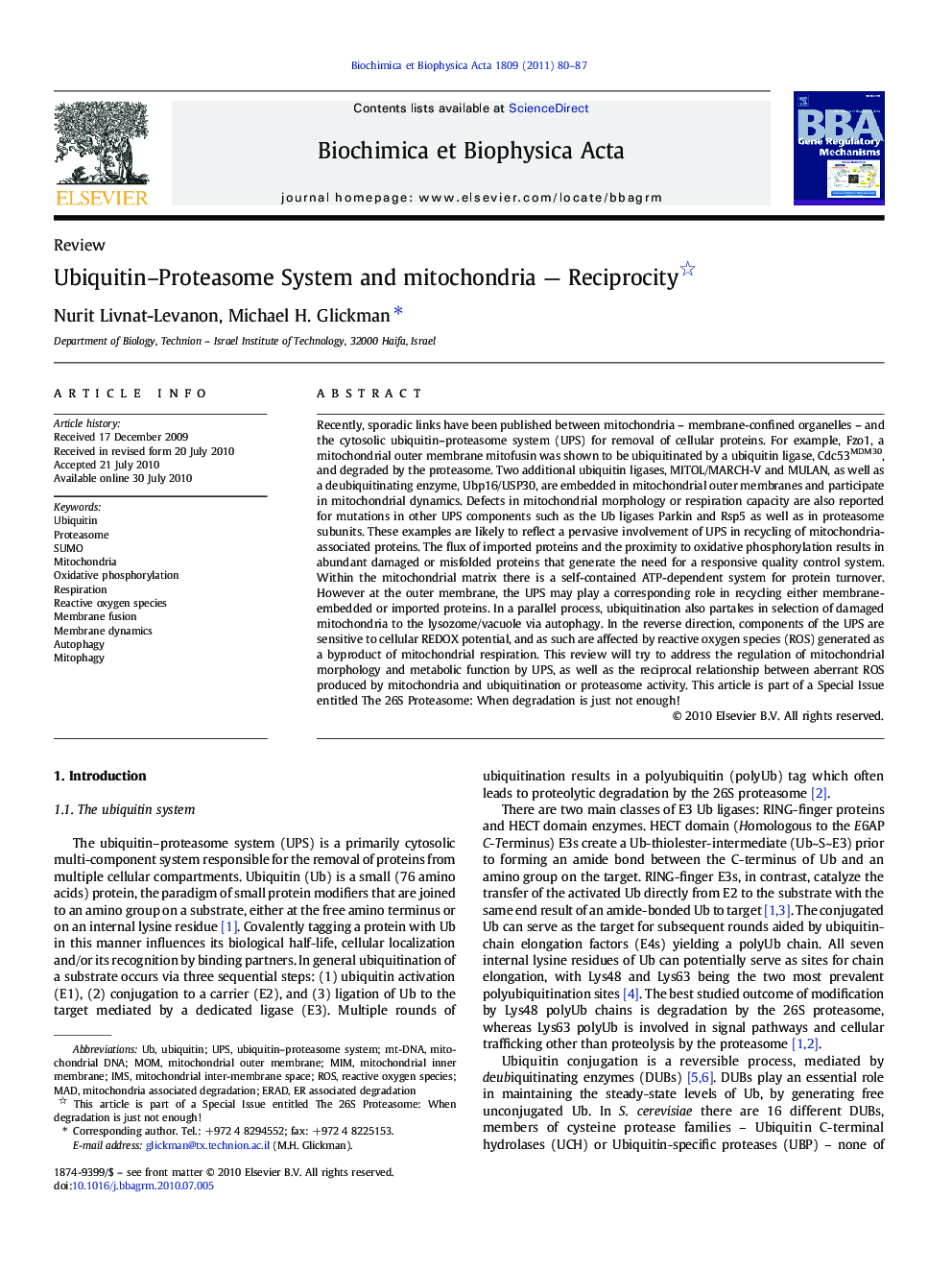| Article ID | Journal | Published Year | Pages | File Type |
|---|---|---|---|---|
| 1946683 | Biochimica et Biophysica Acta (BBA) - Gene Regulatory Mechanisms | 2011 | 8 Pages |
Recently, sporadic links have been published between mitochondria – membrane-confined organelles – and the cytosolic ubiquitin–proteasome system (UPS) for removal of cellular proteins. For example, Fzo1, a mitochondrial outer membrane mitofusin was shown to be ubiquitinated by a ubiquitin ligase, Cdc53MDM30, and degraded by the proteasome. Two additional ubiquitin ligases, MITOL/MARCH-V and MULAN, as well as a deubiquitinating enzyme, Ubp16/USP30, are embedded in mitochondrial outer membranes and participate in mitochondrial dynamics. Defects in mitochondrial morphology or respiration capacity are also reported for mutations in other UPS components such as the Ub ligases Parkin and Rsp5 as well as in proteasome subunits. These examples are likely to reflect a pervasive involvement of UPS in recycling of mitochondria-associated proteins. The flux of imported proteins and the proximity to oxidative phosphorylation results in abundant damaged or misfolded proteins that generate the need for a responsive quality control system. Within the mitochondrial matrix there is a self-contained ATP-dependent system for protein turnover. However at the outer membrane, the UPS may play a corresponding role in recycling either membrane-embedded or imported proteins. In a parallel process, ubiquitination also partakes in selection of damaged mitochondria to the lysozome/vacuole via autophagy. In the reverse direction, components of the UPS are sensitive to cellular REDOX potential, and as such are affected by reactive oxygen species (ROS) generated as a byproduct of mitochondrial respiration. This review will try to address the regulation of mitochondrial morphology and metabolic function by UPS, as well as the reciprocal relationship between aberrant ROS produced by mitochondria and ubiquitination or proteasome activity. This article is part of a Special Issue entitled The 26S Proteasome: When degradation is just not enough!
